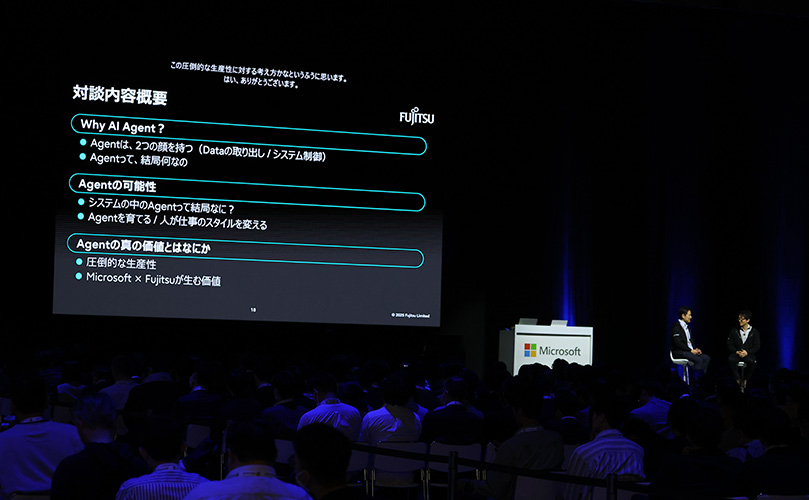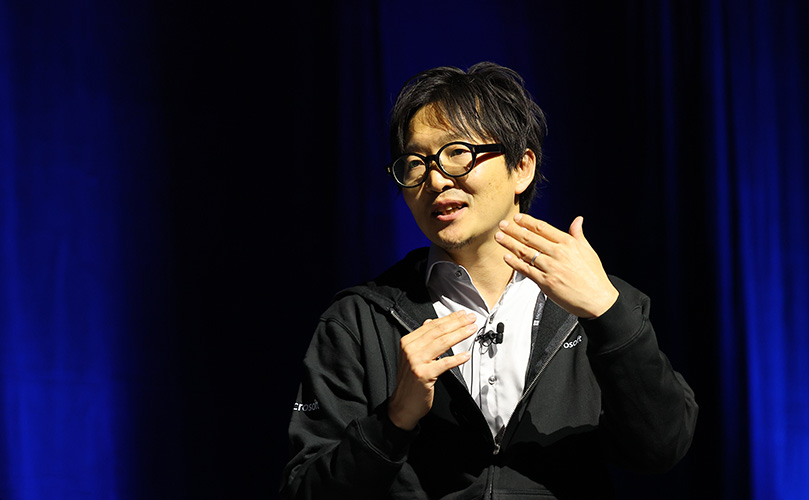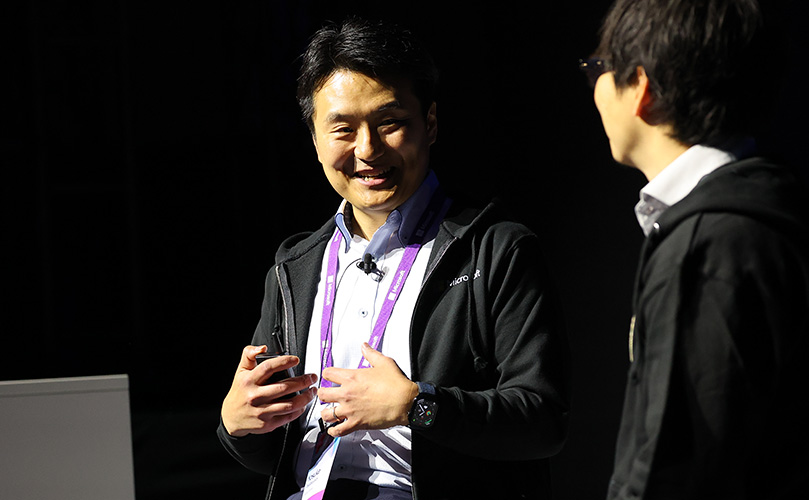On-Device AI for JAL Cabin Crew Workflows Delivering Value in a World with AI Agents: A Fujitsu and Microsoft Collaboration

Report | 2025-8-20
4 minute read
Fujitsu and Microsoft partnered to run a pilot program with Japan Airlines Co., Ltd. (JAL) for the "JAL-AI Report," an app powered by generative AI designed for cabin crew. The trial demonstrated that this AI solution simplifies the report creation process and lessens the workload compared to current applications. This article delves into the definition of generative AI and AI agents, Fujitsu's vision for the future, and the benefits generated through this collaboration between Fujitsu and Microsoft.
Developing a Generative AI App to assist JAL cabin crew with onboard incident reporting
During his keynote speech at the "Microsoft AI Tour" at Tokyo Big Sight on March 27, 2025, Microsoft Chairman and CEO Satya Nadella introduced the "JAL-AI Report," a business application for Japan Airlines Co., Ltd. (JAL) cabin crew that Fujitsu helped develop. This app leverages generative AI to assist cabin crew in creating reports about incidents that occur onboard, which are then handed over to ground staff. By simply entering keywords and phrases and selecting a few checkboxes, users can generate a handover report. To ensure usability during flights, the app is designed to operate in offline, on-device, edge, and on-premises environments.
Fujitsu collaborated with Headwaters Co., Ltd., a company specializing in AI solutions, to develop the "JAL-AI Report" app. For the implementation of generative AI, they used Microsoft's "Phi," a small language model (SLM) recognized for its performance in offline settings, rather than traditional large language models (LLMs) that depend on cloud connectivity. Phi was fine-tuned using JAL's past reports to create a model tailored for cabin crew operations. The prototype verification confirmed that the text in the generated reports was expressed naturally and accurately incorporated JAL's business terminology. The field trial demonstrated that the app could significantly reduce report creation time and the need for corrections.
Dialogue: AI Agents are like "new employees"
In a breakout session following Satya Nadella's keynote speech, Yousuke Takabayashi Head of Digital Shifts DT Transformation Group, Digital Shifts Department from Fujitsu and Yoshihiko Tomoyama, Data & AI Specialist Manager at Microsoft Japan, discussed the future vision of AI solutions and AI agents envisioned by both Fujitsu and Microsoft.
They also highlighted the value that their collaboration brings to customers and the way they work, referencing the development of JAL's business application.

As the use of generative AI continues to grow, AI agents that autonomously perform tasks using these models have recently emerged and are gaining significant attention. Although there are various definitions and interpretations of AI agents today, Tomoyama explained, "They are entities that autonomously execute what you want on your behalf, with instructions that can be provided in natural language."

Regarding Fujitsu's vision for AI agents in the future, focusing on business improvement applications, Takabayashi explained, "AI agents will enter various existing business systems, creating 'business-specific AI agents.' Then, multiple business-specific AI agents will be controlled and linked from a single UI, enabling complex tasks to be executed autonomously." Linking business systems requires coordinating the data managed by each system. However, Takabayashi envisions that AI agents will allow for the control of systems and data from a single user interface.

How will the nature of human work change in the future as AI agent technology advances to the point where it can autonomously perform tasks on our behalf? Takabayashi stated, "AI prompt engineering will become a human job, and humans will operate behind the scenes, with avatars doing the work." In response, Tomoyama added, "AI prompt engineering is akin to human training. Currently, AI agents in the workplace are like 'new employees.'
Everyone in the company must provide them with business knowledge and expertise. If a problem arises, we need to pause and collaboratively think about solutions." Both agreed that "the emergence of AI agents requires us to rethink our established notions of work." Just as when many new employees join an organization, we need to train them to delegate tasks effectively, allowing us to gradually transfer responsibilities we once thought were ours to AI agents, said Tomoyama and Takabayashi.
The value created by Fujitsu x Microsoft
In the case of JAL's generative AI business app, Fujitsu conducted the proof-of-concept and development using Azure as a foundation and the latest version of Microsoft's SLM, "Phi-4/Phi-4-mini." Regarding the value that Fujitsu x Microsoft brings to customers, Tomoyama said, "Microsoft's mission is to empower all organizations and individuals, and it also has strengths in the general-purpose AI domain. On the other hand, Fujitsu is strong in business-specific AI. (With the two companies working together), we can complement each other and provide customers with a variety of options".
Takabayashi mentioned Fujitsu's strengths in the field of AI and AI agents as being "the ability to create AI agents by combining Takane, an LLM for enterprises with advanced Japanese language capabilities, LLM from various developers, and Fujitsu Kozuchi's AI engines”. He stated that one of the values of partnering with Microsoft is that, as in the JAL case, customers can choose from a variety of infrastructure environments, including cloud, on-premises, and edge, according to their needs.
Related Information
AI Agents and the Transformation of the Financial Industry

AI Agents and the Pathway to Evolving Intelligent Manufacturing

Fujitsu Data Intelligence PaaS

